Welcome ‘Benvenuto’
Walking the pilgrimage route, the Via Francigena through the heart of Italy, is exciting,
challenging and a hugely rewarding adventure. Many who have walked the path to Rome before
you, say it is “life-changing”.
The Via Francigena (pronounced with the emphasis on the i – francheegena) has it all –
wonderful, ever changing Italian landscape, classic medieval hill towns, world famous cities,
churches with century old frescoes, Renaissance art and history dating back to 750BC. The Via
Francigena is also about your fellow pilgrims on the trail, the beautiful Italian people in the
villages, the local markets and of course, the delicious Italian food and wine along the way. The
Via Francigena is a feast for the senses – all on foot.
Getting physically and mentally prepared for your adventure is all part of the journey – and one
you will benefit from, long after you have returned home. Putting the effort in well before your
walk, will make the walk so much more enjoyable.
This guide provides some information that will help you in your Via Francigena preparation. This
is only a guide and not set in stone. If you have any questions don’t hesitate to contact me on
carolyn@walklocalitaly.com or phone +61 (0) 457 627 314.
I am really looking forward to sharing this special adventure with you.
Good luck ‘Buona fortuna’
Carolyn
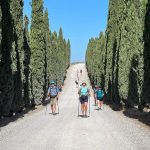
The aim of this walking plan is to form a good, strong, solid base. By being consistent, over
time, you will achieve this. With a strong base, the sky is the limit.
Take it slow
Take it slow and steady when increasing your weekly distance, making sure to give yourself
enough time to recover. Build up strength and fitness gradually to avoid injuries or getting too
tired. Stick to a plan and remember, the goal is to reach 20-30km, so don’t try to do it all in one day.
Keep track of your progress with a simple diary or use an activity trackers like Fitbit, Garmin, Apple Watch, or on your phone with the free Strava
App.
Pick the right shoes
Make sure you have comfy, good-quality walking shoes that aren’t too old or worn out. If you are
unsure, head to a sports store and ask them to measure and fit you properly. Good quality,
comfortable sports socks will also help to prevent blisters.
Stay Hydrated
Make sure you have an easy way to carry water and food. Many experienced walkers use
hydration packs with a built-in bladder and drinking tube. This is highly recommended for the Via
Francigena walk but a drink bottle is perfectly fine when starting out. Remember to always wear
a hat and sun cream.
Listen to Your Body
If you feel pain that doesn’t go away or gets worse, it is important to get help from a personal
trainer or physiotherapist. Make sure to include at least one day of rest in your weekly schedule
– this is your recovery day. If you are sick or not feeling well, it is best to rest. Always pay
attention to your body. There are times when you may need to push yourself, but there are also
times when it is important to slow down. Your success depends on how well you take care of
your body and give it the rest it needs.
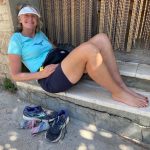
Mix It Up
Since the Via Francigena is a walk, walking is the best way to train – “time on feet”. If you have
a treadmill, it is a great option for winter training or when it is challenging to go outdoors. Make it
interesting by changing inclines, speeds, or trying various programs. On the VF we will be
walking on various surfaces such as gravel paths, woodland tracks, original Roman stone
roads, dirt paths, bitumen, climbing stairs, lots of undulating hills and a few steep inclines, so
mix up your walks to include bush trails, footpaths, some hills and beach walking.
Include a cross-training session each week to help your body adapt and get stronger. Try
exercises like bodyweight workouts, weight training, core exercises, and activities like yoga or
Pilates.
Train Together
Exercising with a friend is enjoyable, safer, and brings better results. Reach out to friends or
colleagues and plan to train together. Having a support network can keep you motivated,
especially when your energy is low.
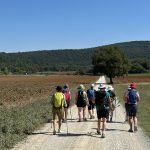
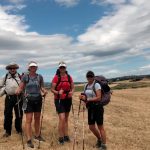
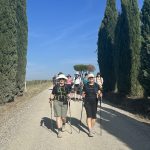
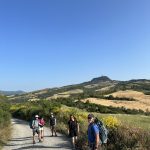
Nourish Your Body
Eat healthy foods for the best results. On your long training day, try out energy gels or bars to
see how they affect your body. You can find energy gels at outdoor hiking or cycling stores or
just grab a banana and/or some dried fruit, which work just as well. On the ‘VF’ I personally
don’t eat snacks as we have a big, hearty breakfast each morning (some people do wrap some
Italian cakes and pastries from breakfast for their morning tea if they tend to get hungry easily).
We stop for lunch each day and eat big, freshly made salads with meats and cheeses and lots
of local bread and dinner is at a local trattoria or pizzeria, so plenty of healthy food to nourish
our bodies each day.

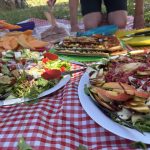
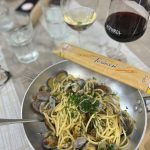

Stretching
Before you start your daily workout, stretch to help your body warm up and get ready for
exercise. At the end of your session, do full body static stretches. This helps with recovery and
reduces the chance of getting hurt. Adding a weekly full body stretch or yoga class to your
training program is a good idea. It helps with recovery, flexibility, posture, and balance.
Enjoy and Follow Your Plan
This journey you are starting is exciting. Have fun in each training session, celebrate your
achievements, and give yourself time to adjust, learn, and get stronger. Your fitness will grow,
even though there might be challenges. In tough times, stay focused on your goals, stick to your
plan, and keep moving forward. Our Walk to Rome, I guarantee, will be a memorable and well-
deserved accomplishment.
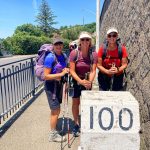
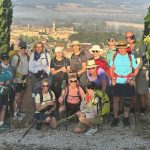

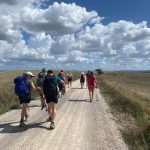
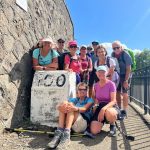

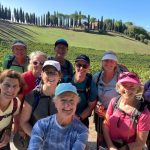
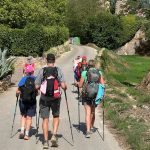
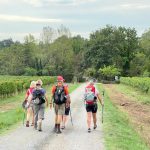

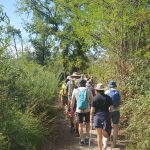


Comments